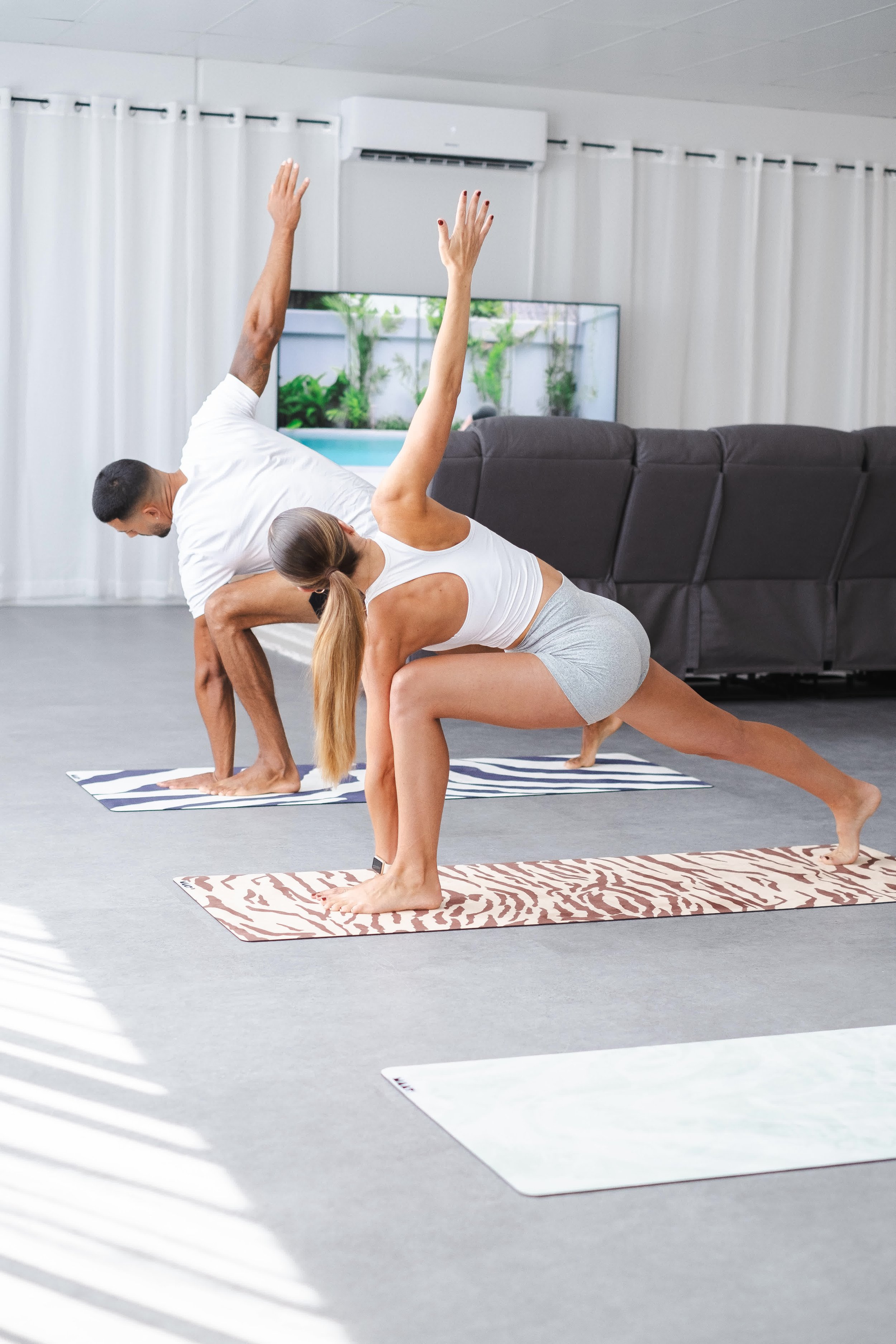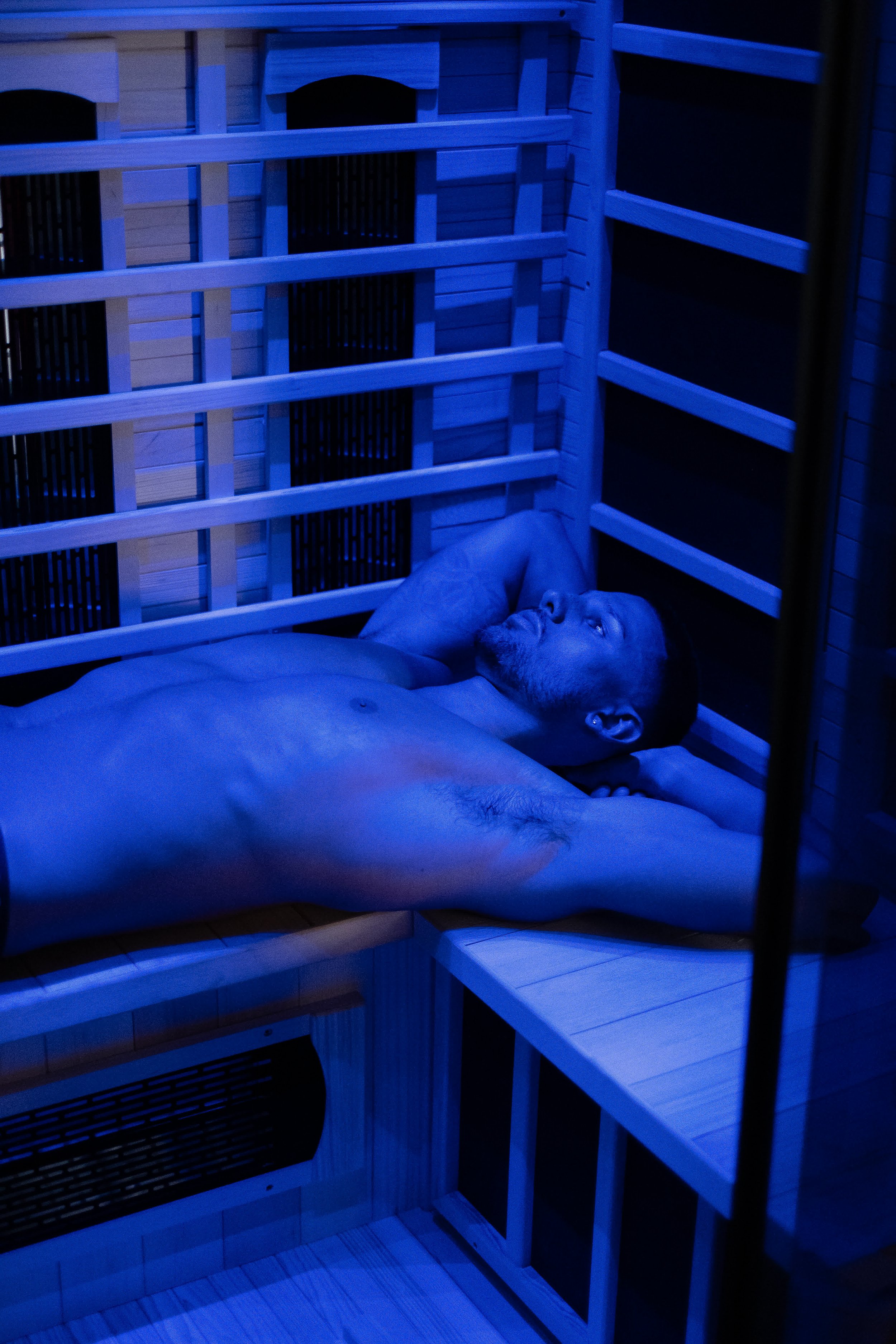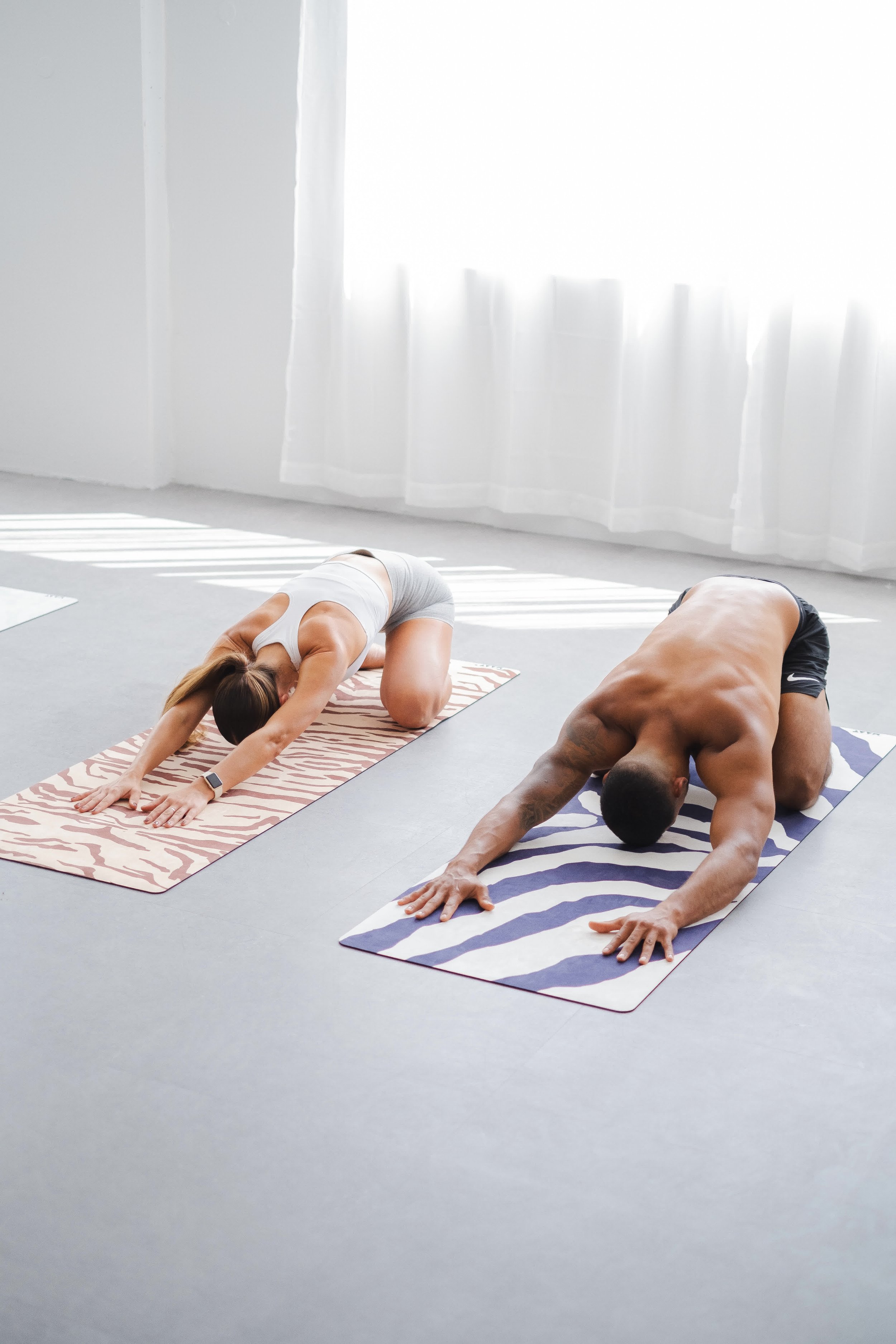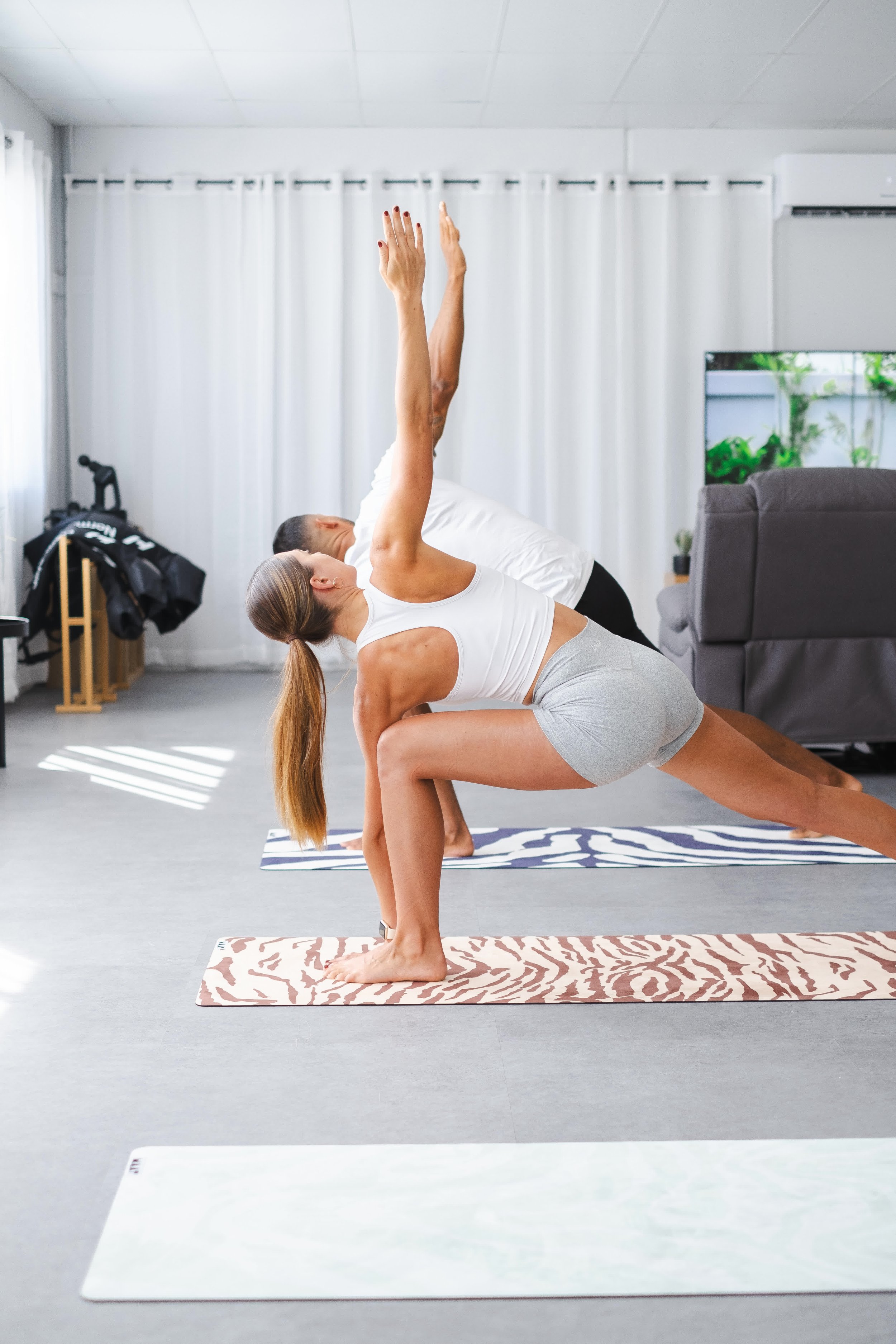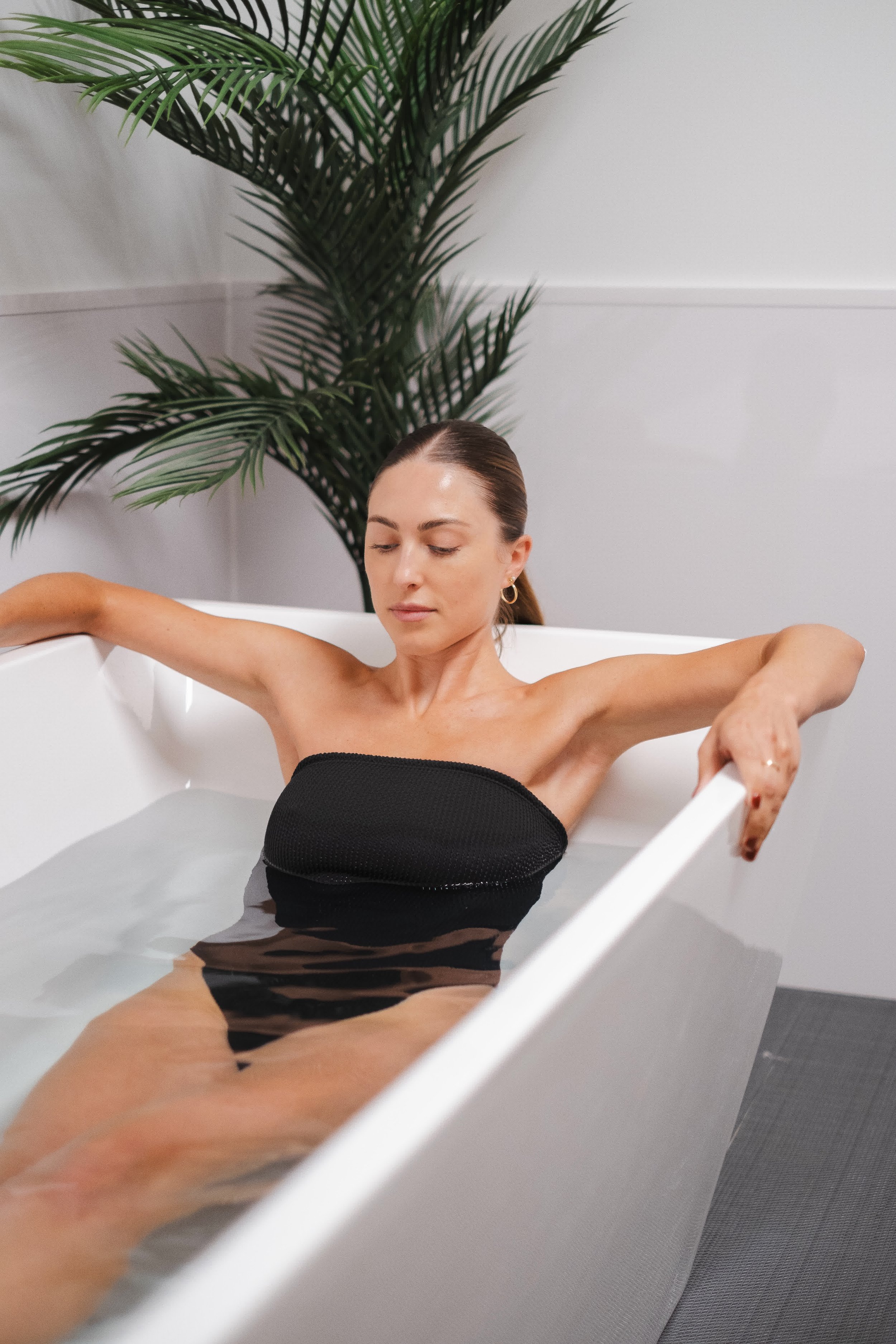Recovery Centre
-
Infrared saunas offer a range of health benefits that make them increasingly popular among individuals seeking holistic well-being. Here are some key advantages:
Detoxification: Infrared saunas promote deep sweating, helping the body eliminate toxins and heavy metals. This natural detoxification process can contribute to clearer skin and improved overall health.
Relaxation and Stress Relief: The gentle warmth of infrared saunas induces a state of relaxation by soothing muscles and joints. This can lead to reduced stress levels, improved sleep, and an overall sense of calm and well-being.
Pain Relief: Infrared heat penetrates tissues, muscles, and joints, providing relief from chronic pain conditions such as arthritis, fibromyalgia, and muscle soreness. This targeted heat therapy can enhance circulation and alleviate discomfort.
Weight Management: Regular use of infrared saunas may support weight loss efforts by increasing the heart rate, promoting calorie burning, and assisting in the elimination of water weight through sweating.
Improved Circulation: The heat generated by infrared saunas stimulates blood flow, enhancing circulation throughout the body. This can lead to better oxygenation of tissues and improved cardiovascular health.
Skin Health: Increased perspiration helps cleanse the skin by unclogging pores and promoting a healthy complexion. The improved circulation can also contribute to a more youthful appearance.
Boosted Immunity: Regular sauna sessions may strengthen the immune system by promoting the production of white blood cells and increasing the body's ability to fight off infections and illnesses.
Cardiovascular Benefits: Infrared saunas can have positive effects on cardiovascular health, including lowered blood pressure, improved cholesterol levels, and enhanced vascular function.
Convenience and Efficiency: Infrared saunas operate at lower temperatures than traditional saunas, making them more comfortable for longer sessions. They also heat up quickly, allowing users to experience the benefits in a shorter amount of time.
Accessibility: Unlike traditional saunas, which require high temperatures to heat the air, infrared saunas are accessible to individuals who may be sensitive to extreme heat, expanding the range of people who can enjoy their therapeutic benefits.
-
Ice baths, also known as cold water immersion or cryotherapy, offer a variety of health benefits, particularly for those seeking post-exercise recovery and overall well-being. Here are some key advantages:
Reduced Muscle Inflammation and Soreness: Submerging the body in cold water constricts blood vessels and reduces inflammation. This can alleviate muscle soreness and expedite the recovery process after intense physical activity.
Improved Muscle Recovery: Ice baths help flush out waste products like lactic acid that accumulate in muscles during exercise. This aids in the restoration of muscle function and reduces recovery time.
Pain Relief: Cold exposure can act as a natural analgesic, numbing nerve endings and providing relief from various types of pain, including joint and muscle discomfort.
Enhanced Circulation: Cold water immersion causes blood vessels to constrict and then dilate upon rewarming. This process, known as vasodilation, promotes better circulation, delivering oxygen and nutrients to tissues more efficiently.
Reduced Swelling and Edema: Cold therapy helps reduce swelling and fluid retention, making it effective for managing conditions involving inflammation, such as arthritis or injuries.
Improved Sleep: Exposure to cold can trigger the release of melatonin, the hormone responsible for regulating sleep. Ice baths may promote better sleep quality and help individuals achieve a more restful night's sleep.
Mental Well-Being: Cold water immersion has been linked to the release of endorphins, the body's natural feel-good chemicals. This can lead to an improved mood and reduced feelings of stress and anxiety.
Boosted Immune System: Cold exposure may stimulate the production of white blood cells and enhance the immune response, potentially making individuals more resilient to infections.
Calorie Burning: The body expends energy to maintain its core temperature during cold exposure. While not a substitute for regular exercise, ice baths can contribute to calorie burning and may be a component of weight management strategies.
Accelerated Metabolism: Cold exposure activates brown fat, a type of fat tissue that burns calories to generate heat. Regular ice baths may contribute to a modest increase in metabolism over time.
-
Compression therapy involves the use of specially designed garments or devices to apply controlled pressure to specific areas of the body. This therapeutic technique offers various benefits, making it popular for both medical and athletic purposes. Here are some key advantages:
Improved Circulation: Compression therapy enhances blood circulation by applying pressure to the veins, helping to prevent blood from pooling in the extremities. This can be particularly beneficial for individuals with conditions like venous insufficiency or those who spend long periods sitting or standing.
Reduced Swelling and Edema: The controlled pressure from compression garments aids in reducing swelling and fluid retention in the tissues. This makes compression therapy effective for managing conditions such as lymphedema, post-surgical swelling, or edema resulting from injury.
Enhanced Recovery after Exercise: Athletes often use compression garments to support muscle recovery. Compression helps to minimize muscle soreness, speed up the elimination of metabolic byproducts, and reduce inflammation following intense physical activity.
Prevention of Deep Vein Thrombosis (DVT): Compression stockings are commonly prescribed to individuals at risk of DVT, such as those on long flights or bedridden patients. The pressure helps maintain proper blood flow, reducing the risk of blood clot formation.
Pain Relief: Compression therapy can alleviate pain associated with conditions like chronic venous insufficiency, varicose veins, or musculoskeletal injuries. The pressure helps to stabilize and support the affected areas, promoting comfort and mobility.
Management of Chronic Conditions: Individuals with chronic conditions like diabetes or arthritis may benefit from compression therapy, as it can help reduce symptoms such as swelling and discomfort associated with these conditions.
Enhanced Muscle Support: Compression garments provide support to muscles and joints, which can be particularly advantageous during physical activities. This support may improve joint stability and reduce the risk of injury.
Post-Surgical Recovery: Compression therapy is often used post-surgery to minimize swelling, promote healing, and prevent complications such as blood clots. The controlled pressure aids in the proper healing of surgical sites.
Improved Oxygen Delivery: Compression therapy can enhance oxygen delivery to tissues by improving blood flow. This is crucial for promoting healing and overall tissue health.
Reduced Fatigue: Individuals who spend extended periods on their feet, such as healthcare professionals or airline personnel, may experience reduced fatigue and discomfort through the use of compression stockings, as they help maintain proper circulation
-
Massage guns, also known as percussion massagers or percussion therapy devices, have gained popularity for their ability to provide targeted and effective muscle relief. Here are some key benefits associated with the use of massage guns:
Muscle Recovery: Massage guns help accelerate muscle recovery by providing deep tissue massage and promoting blood flow to the targeted muscles. This can reduce muscle soreness and stiffness after intense workouts or physical activities.
Pain Relief: The percussive action of massage guns helps alleviate muscle pain and discomfort by breaking up knots, releasing tension, and reducing muscle tightness. This can be particularly beneficial for individuals with chronic pain conditions or those recovering from injuries.
Improved Flexibility and Range of Motion: Regular use of massage guns can enhance flexibility and increase the range of motion in joints. By targeting tight muscles and improving muscle elasticity, these devices contribute to better overall mobility.
Reduced Muscle Tension: Massage guns work to relieve muscle tension by applying rapid pressure to muscle fibers. This can be especially effective in areas prone to tightness, such as the neck, shoulders, and lower back.
Enhanced Blood Circulation: The percussive movements of massage guns stimulate blood flow to the muscles, which helps deliver oxygen and nutrients to the tissues. Improved circulation supports overall muscle health and recovery.
Myofascial Release: Massage guns can assist in myofascial release, a technique that targets the fascia (connective tissue) to improve flexibility and reduce pain. This can be beneficial for individuals with conditions like plantar fasciitis or IT band syndrome.
Stress Reduction: Beyond physical benefits, massage guns can contribute to mental well-being by helping to relax the body and reduce stress. The soothing effect of massage can promote a sense of calm and relaxation.
Convenience and Accessibility: Massage guns provide a convenient and accessible way to enjoy the benefits of massage without the need for professional appointments. Users can target specific areas at their own pace and in the comfort of their homes.
Postural Improvement: Regular use of massage guns may help address muscle imbalances and promote better posture. By targeting tight muscles and releasing tension, these devices contribute to overall musculoskeletal alignment.
User-Controlled Intensity: Most massage guns come with adjustable intensity levels, allowing users to customize the pressure based on their preferences and sensitivity. This makes them suitable for a wide range of individuals with varying pain thresholds.


